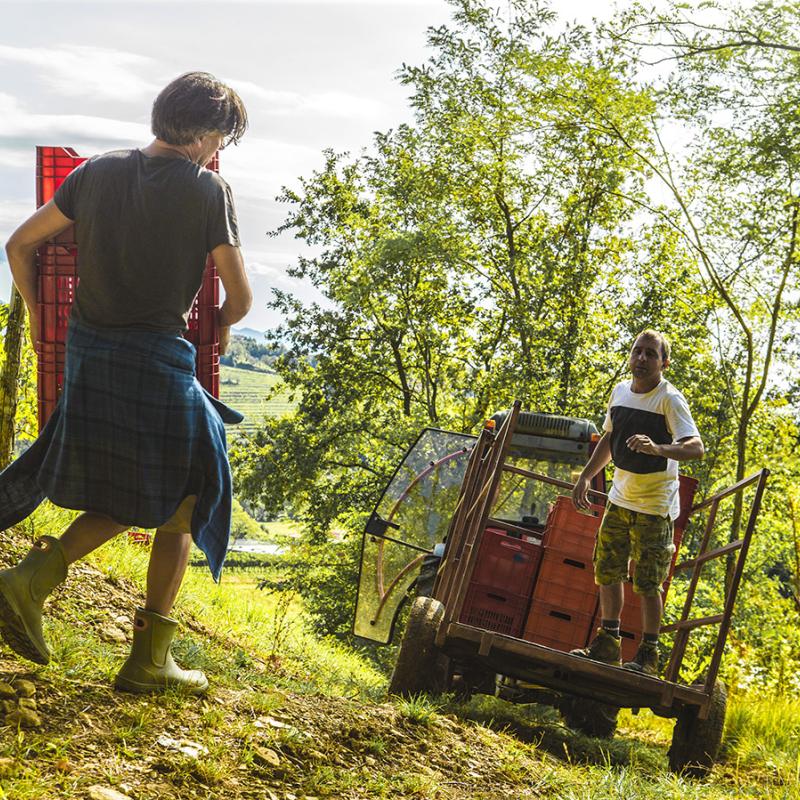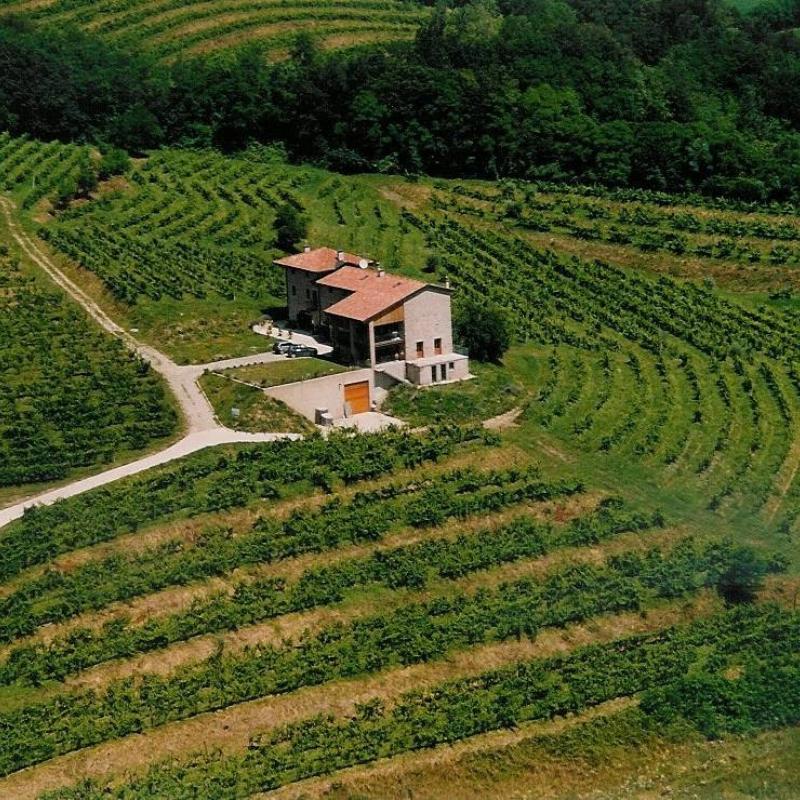I struggled with the Friulano grape variety for a long time. It’s an indigenous white grape from the Friuli Venezia Giulia region in North East Italy. The examples I had tried were overly blousy and alcoholic, had an off-putting texture, or were too bitter.
I had almost written it off when I visited I Clivi in Corno di Rosazzo. I was greeted by the enigmatic Ferndinando Zanusso, Mario’s late father. Although already well into his seventies at the time, he had the biggest glint in his eye and talked to me non-stop about the wines, the estate and mistakes other producers were making with local varietals. Wine writer Antonio Galloni had visited them the day before so, fortunately for me, there were lots of older vintages available to taste. By the time I left, I realised what Friulano was capable of - in the right hands. The wines were ethereal, pure and compelling. I was hooked.
Mario now runs the 12-hectare estate, which focuses on two hillside vineyards, one in Corno di Rosazzo (Collio Orientale DOC), the other in Brazzano di Cormons (Collio DOC). The family came to Friuli in search of old vines and set up the winery in 1996, with established old vines on the famous Ponca soil. This is a unique soil comprising chalky clay and limestone - both very rocky, which gives the wines distinct mineral notes and aromatic complexity.
There is very little intervention both in the vineyard and during vinification; the estate’s philosophy is to let the terroir and the indigenous varieties come to the fore and speak for themselves. The family made an instinctive decision to focus on organic viticulture. Hand-picked whole bunches are pressed very lightly to only extract the free-run high quality juice. Until recently all wines were aged in stainless steel to maintain purity, but Mario has introduced some cement and oak barrels for the single vineyard wines, Galea and Brazan. Both wines are field blends, which is a traditional practice for the region: a mix of different grape varieties grown together in the same vineyard, picked and vinified together. All wines are aged on the fine lees for a minimum of six months, to give texture and flavour intensity.
At VinItaly a year later, I introduced a friend to the estate with a bottle of Malvasia 80 anni (the vines are actually nearer to 100 years old now). Priced very modestly in a Veronese trattoria, it is probably the best value and most memorable wine I have ever drunk in a restaurant.
Mario has recently set up a new estate, Viniverso, close to the ancient Roman town of Aquileia on the Adriatic. There he focuses on varietal expression of the different grapes, all matured in stainless steel. These wines are exceptionally good for the price one pays.
Tasting the range is an absolute joy. Mario brings out the best in each variety, and achieves an elegance and purity that’s hard to comprehend. The wines are crisp and energetic in youth, age beautifully and can be kept in the cellar for many years.
Available Wines
Lovely bright fruit, with strawberries, blueberries and raspberries. Floral notes of violet, a slight smokiness and a delicate herbaceous background. An extremely elegant, smooth and fine example of Cabernet Franc, with magnificent energy and tension.
From a parcel of 70-year-old vines, this bursts out of the glass with intense floral and fruity notes: apricot, melon and rose petals. Fresh and creamy, it dances onto the palate with fresh acidity and a creamy texture. It finishes big with precise minerality and a crisp almond aftertaste. Harmonious, expertly balanced and a joy to drink.
This is from an 80-year-old vineyard that faces south-west and gets lots of evening sun. An explosive nose of wild flowers, pear, orange peel and ginger spice. It has a very silky, flowing texture, and the spice carries through on to the palate. The finish is epic; saline, mineral and spicy. It spends 12 months ageing on the fine lees, which gives depth of texture and flavour.
Complex and beguiling on the nose; floral with elderberry and camomile. Yellow in colour with gold hues. This is intense, yet restrained and delicate. Pear and peach intermingle with green melon and sweet spice. Precise mineral notes on the finish, with a youthful energy. This is a wine to keep, but will always delight whenever it’s opened.
A variety that you don’t see every day, and sp definitely worth seeking out. Tangerine, violets and licorice on the captivating nose. More wild herbs and floral notes on the palate with precise minerality and a long, stony finish. It is a full bodied, slightly tannic variety which lends itself very well to food pairings. The spice and structure stand up to Thai and other spicy cuisine. The vines are a mere 70-years-old, and the quality comes through in this knockout example.
This is one of two ‘cru’ single vineyard wines, a field blend of 90% Friulano and 10% Verduzzo. Honey, jasmine and vanilla waft effortlessly from the glass. Pithy and rich, with a hint of marmalade, before ginger spice takes over. It becomes stonier on the palate with earthy notes and a mouth-watering finish. Aged in French oak and stays on the fine lees for two years. With a south-easterly exposition, it gets lots of morning sun. We decanted the bottle, which was a wise move as it allowed the component parts to harmonise.
Another field blend of 50% Ribolla Gialla, 40% Friulano and 10% Malvasia. This vineyard is in Brazzano and the exposition south-west, with a bigger diurnal temperature range. Mario says this gives more hydrocarbonic aromas (petrol, to you and me). Aromas of white peach and flowers, which become more savoury on the palate. Intense and sapid, the finish is mineral, grippy and focused. This is sublime, but requires a little patience to show its best.

